Half-ton pickups offer impressive capabilities, but they have their limits. That’s where the F-250 Super Duty comes in.
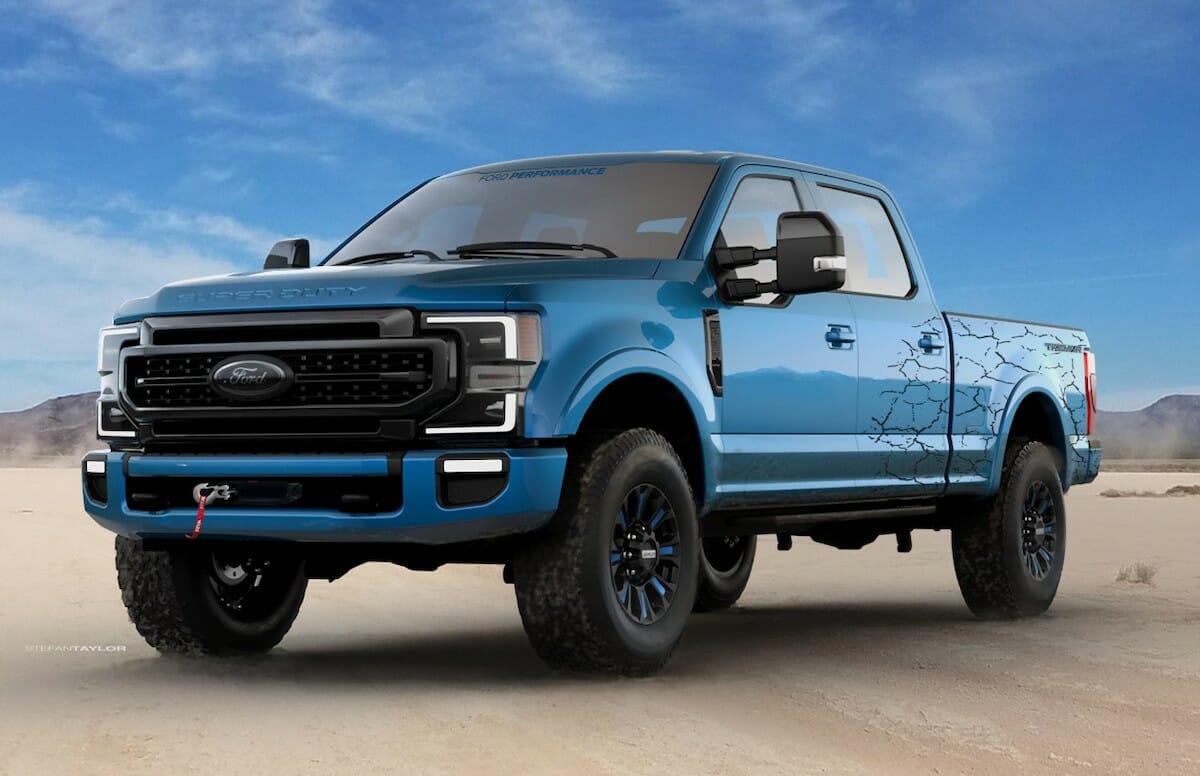
Ford Motor Company has produced vehicles for over 100 years, with one of the most notable being the F-series pick-up trucks. Ford’s famous F-series trucks set the standard for pick-ups worldwide, constantly innovating drivetrains for more power and designing chassis structures for better hauling capability.
Ford developed an F-series truck for light-duty family use with the F-100, all the way up to heavy-duty tow trucks with the F-600.
Beginning with the second generation of trucks, the F-250 name was introduced as a combination of the F-2 and F-3 to create a three-quarter-ton model. This three-quarter-ton model would be a step up from the base F-150, providing more functional specifications.
While the F-series trucks always stood out as a working-class vehicle for the everyday person, in the late 1990’s Ford decided to split up their line of trucks and tailor more specifically to the market as it evolved.
We break down which model year for the F-250 is the best from the past 20 years, so you can narrow your search when shopping around for that next work truck.
After nearly 40 years of success with the F-series trucks, Ford decided to split their lineup into better categories for customers. Under the “Super Duty” title, Ford F-series trucks starting at the F-250 began to take on a more work-oriented design while the F-150 steered more towards a second family vehicle.
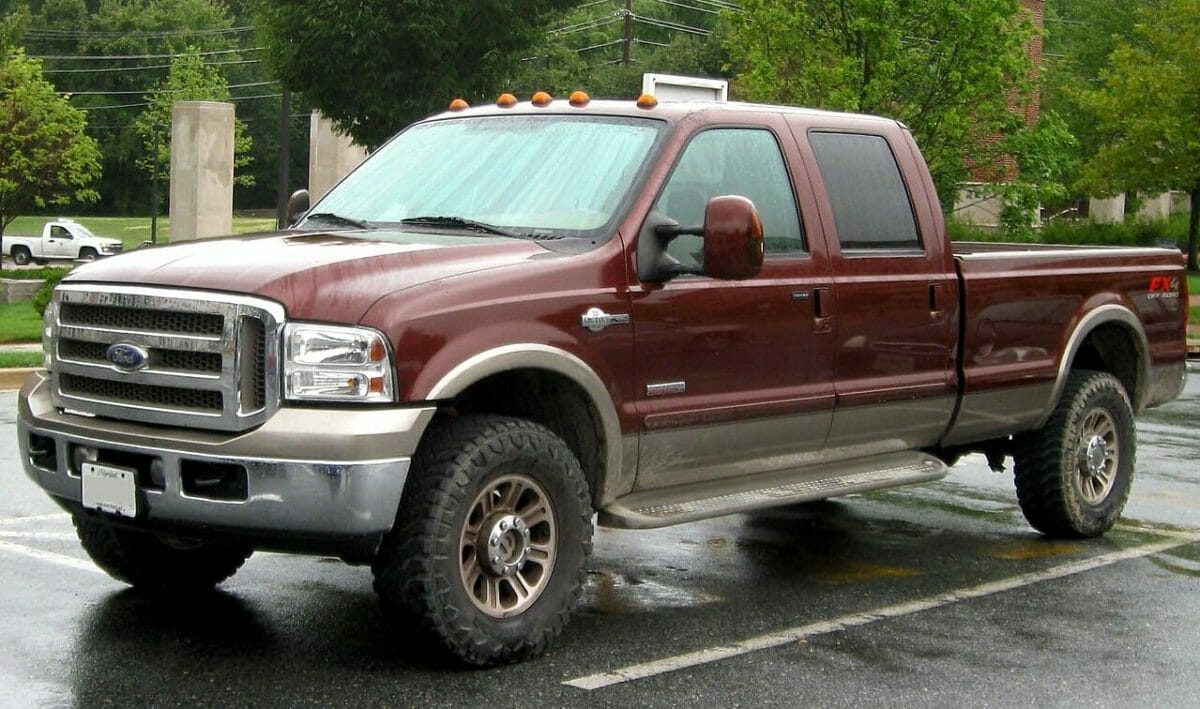
First-gen. Ford F-250 Super Duty (1999-2007)
For the first-generation Super Duty there were three cab designs: two-door standard cab, 2+2 door super cab, and four-door crew cab.
Super Duty trucks took on design cues from Ford’s industrial series trucks like the Aeromax, including a raised hood line, larger grill, and dropping the front portion of the side windows down to allow for more visibility.
An industry first, the Super Duty came standard with two sizable complete ringed front tow hooks. Interior design is classic 1990s Ford, but with more rugged plastics and lots of storage.
The 2005 edition saw a facelift of the Super Duty series where Ford fitted new bumpers, headlights, and a locking tailgate.
The interior got a refresh with a driver’s side glove box, dashboard-mounted auxiliary switches for plow trucks or winches, and Ford TowCommand, an in-dash trailer brake utilizing the truck’s ABS.
When it comes to power plants, the first-generation Super Duty trucks received four options. The first two engines offered were the standard Triton V8, Ford’s truck version of the famous Ford Modular V8.
For 1999, the engine put out 260 horsepower and 350 lb.-ft. of torque. 2005 saw the Triton V8 receive new three-valve heads, increasing performance to 300 horsepower and 365 lb.-ft. of torque.
To replace the long-standing 7.5-liter V8, Ford released the Triton V10 as the high power option. Ford’s new V10 put out 310 horsepower and 425 lb.-ft. of torque, with the 2005 revision also gaining three-valve heads and boosting performance to 362 horsepower and 457 lb.-ft. of torque, respectively.
A diesel engine option came in the form of a 7.3-liter Powerstroke turbo V8 putting out 275 horsepower and 525 lb.-ft. of torque.
In 2003, Ford switched over to a 6.0-liter Powerstroke turbo V8 which bumped numbers up to 325 horsepower and 560 lb.-ft. of torque. 6.0-liter Powerstrokes are most famous for people to “bulletproof” using a few minor upgrades and then having the engines last 200,000 plus miles even with hard use.
Super Duty trucks launched with three trim packages, the base XL, which was considered the “fleet truck” trim, XLT, and Lariat. Ford fitted the XL with vinyl-wrapped bench seating, manual locks, manual windows, and black steel wheels to match black front and rear bumpers.
The base XL had options for things like air conditioning, cloth-wrapped seats, and chrome bumpers.
Bumping up to the XLT, the most common trim for the Super Duty, you received all of the optioned features from the XL. Options for the XLT included aluminum wheels, an automatic transmission, and keyless entry, which became standard for later years.
Ford’s top trim Super Duty Lariat added leather seating, keyless entry, security system, premium aluminum wheels, electronic climate controls, a power front bench seat, and a chrome grille. Lariats had options for a color-keyed grille, front bucket seats, heated front seats, and an automatic, which later became standard for the trim.
Although the first-generation Super Duty does have a few draw-backs, mainly being susceptible to rust on cab corners and rear wheel arches, you’ll be hard-pressed to find one-star reviews from people hating the truck.
A 2005 Ford F-250 Lariat diesel with under 150,000 miles can be found today for under $20,000, which is still a great price for how much truck you get.
Countless reviews of five-star reliability and towing capability give you extreme confidence in purchasing a used F-250 Super Duty. However, most will tell you to try and avoid the Triton V10, for when it does break, it can be a costly repair.
Recalls for the first generation were minimal, many of which being lighting-related and only one significant engine issue related to stalling 6.0-liter Powerstroke motors which Ford later resolved.
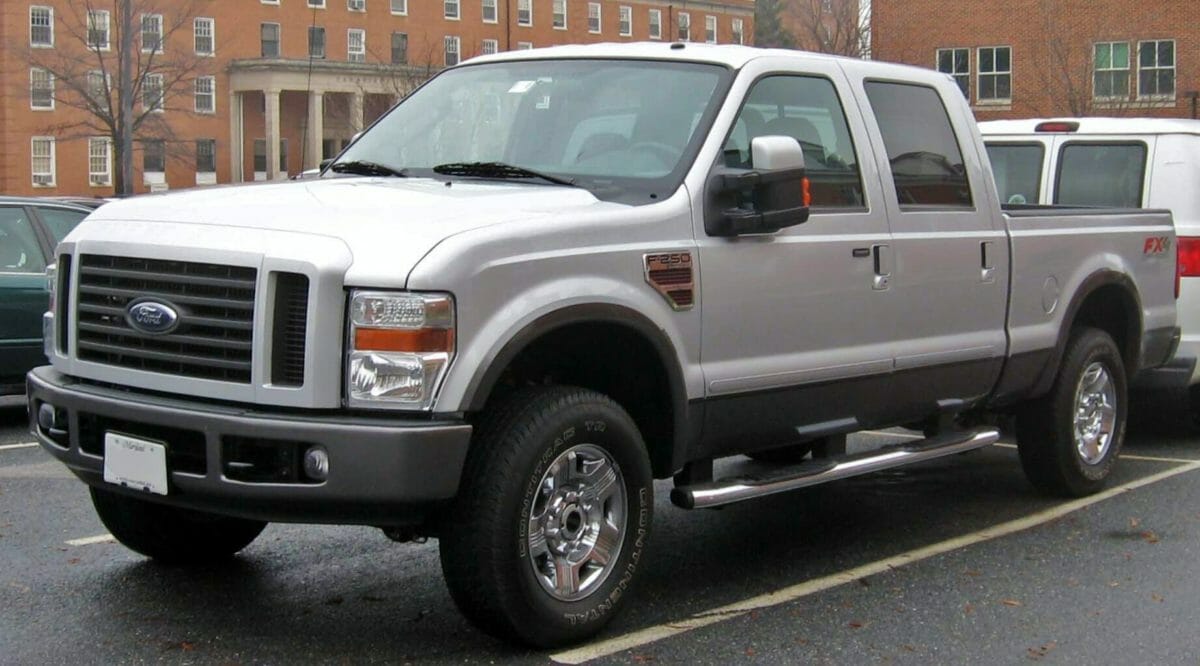
Second-gen. Ford F-250 Super Duty (2008-2010)
After pushing the release back a year due to quality issues, the new generation Super Duty debuted with a completely new look. Exterior changes saw a new front fascia, new tail lamps, and different wheels, while Interior changes included all new panels, trim, gauges, and seats.
The trucks carried over the design of the auxiliary switches and in-dash Ford TowCommand.
Second-generation Super Dutys brought over both gasoline engine options from the first generation. However, for the diesel engine, Ford released a newer, updated version. Ford’s new 6.4-liter Powerstroke V8 boasted new piezo fuel injectors and a sequential twin-turbo setup to rid of some issues seen in the 6.0-liter.
Keeping the same trim levels from the previous generation, Ford released the F-250 in XL, XLT, Lariat, and new FX4 trim. The FX4 trim offered 17-inch forged aluminum wheels wrapped in all-terrain tires, illuminated entry, and unique FX4 cloth upholstery.
The XL trim generally stayed the same with manual windows, manual locks, steel wheels to provide a basic work truck. XLT trim saw the addition of dual-beam headlamps, lumbar adjustment front seating, and an auxiliary input. Lariat trim kept its theme with leather seating, updated message center, and in 2009 received Ford Sync.
The second-generation F-250 Super Duty’s showed even more promise in reliability with the updated diesel engine. Receiving minor recalls for small issues and having beautiful reviews from customers, it is odd to see such short production years.
Many second-generation on the market are old fleet trucks in XL trim. However, you can find diesel XLTs and Lariats for around $20,000, depending on mileage.
Although there was nothing inherently wrong with the second generation Super Duty, Ford saw the need to compete with the new Chevy Silverado HD and Dodge Ram HD. Instead of giving the second generation a facelift, they released a new generation of trucks.
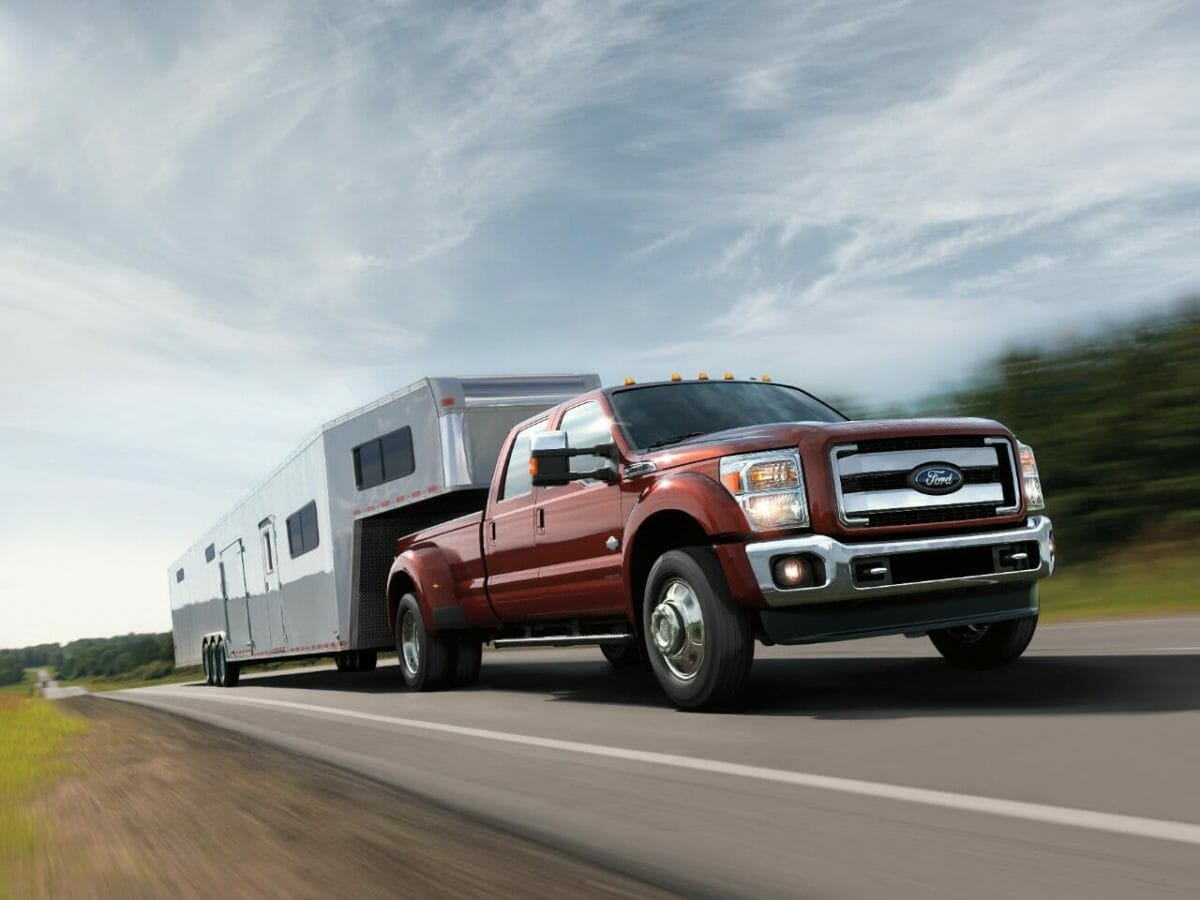
Third-gen. Ford F-250 Super Duty (2011-2016)
Ford’s updated Super Duty came out guns blazing, winning three awards in its first years of release. Winning Truck Trend’s “Topline power puller” as well as Popular Mechanics‘ “Best Workhorse” and “Gear of the Year” proved that the updated Super Duty lineup was worth the effort.
Ford updated the exterior design once again with a more prominent front fascia, upgraded lighting front to rear, and built upon the exact structure of 1999 trucks. The new Super Duty had the thickest steel frame of any truck on the market.
Unique to the 2011 Ford F-250 and SRW F-350 Super Duty is the optional locking rear differential for Sterling 10.5 axles, a well sought-after option to look for when VIN checking a used truck.
The interior design kept the central bezel of the second-generation trucks while adding an LCD instrument display screen. Auxiliary inputs became standard for every trim, with Sony premium audio packages being options on each trim level.
Trim levels for the third-generation Super Duty stay true to form with the XL, XLT, Lariat, and King Ranch packages. The XL trim is the quintessential work truck. It comes with manual seats, locks, and windows, along with vinyl upholstery and 17-0inch” steel wheels.
XLT trim offers 17-inch aluminum wheels, trailer brake controller, power windows, power locks, keyless entry, and heated mirrors.
Lariat models included XLT features along with leather upholstery, rear parking aid, auto temperature-controlled air conditioning, premium audio with Ford Sync, steering wheel controls, power heated mirrors with spotlights, and SecuriLock entry keypad.
Top trim King Ranch packages gave you chaparral leather upholstery, heated and cooled front seats, memory position driver’s seat, rear-view camera, leather-wrapped steering wheel, and remote start.
Engine options for the third-generation Super Duty consisted of a new 6.2-liter two-valve Ford Boss V8 capable of 385 horsepower and 405 lb.-ft. of torque. This gas engine is also E85 capable, producing fewer emissions and costing less to fill up.
The diesel option for third-generation Super Duty is a 6.7-liter Power Stroke V8 entirely produced by Ford. This new turbo-diesel V8 put out 390 horsepower and an astonishing 735 lb.-ft. of torque.
After its release, Ford noticed the slightly better power figures from the new Chevy Silverado and bumped the diesel to 400 horsepower and 800 lb.-ft. of torque just months later. Two thousand fifteen models saw even better power figures at 440 horsepower and 860 lb.-ft. of torque.
Although the National Highway Traffic Safety Administration investigated the Super Duty for steering failures, the NHTSA found that the issues were driver error and had nothing to do with the design. The investigation is the only instance of something being slightly wrong with the generation of trucks, proving that Ford once again built a bulletproof workhorse truck.
Unfortunately, the incredible track record pushes the price range above $30,000 for a sub-150,000-mile diesel XLT. The third-generation truck’s reputation can be backed even more so by reviews from customers, with many still using these trucks in their fleet without feeling the need to upgrade for Ford’s fourth and newest generation of Super Duty.
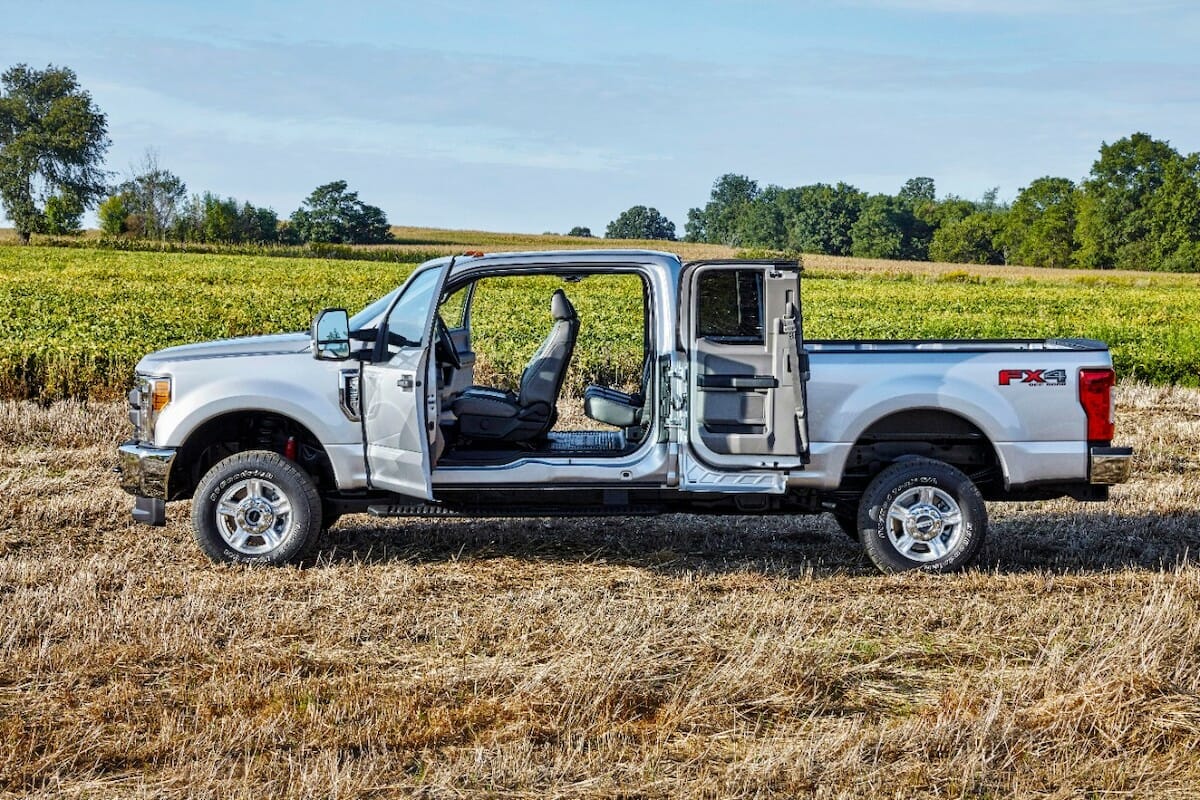
Fourth-gen. Ford F-250 Super Duty (2017-Present)
After six years of success with the third-generation trucks, Ford put out its newest Super Duty line to accommodate more technology advancements and customer needs. Starting with a completely new frame design, this marked the last of the shared designs with older generations.
Brand-new for the F-series (Super Duty and F-150), the body and bed of the truck are made from aluminum. Aluminum construction makes the truck lighter and future-proofs the truck by preventing rust commonly seen on some of first-generation trucks.
Weight savings came in over 350 pounds compared to 2016 Super Duty models, even after beefing up driveline and frame components. The new line of trucks shared the same drivetrain options from the previous generation.
However, the torque figures rose on both the 6.2-liter gas engine (405 lb.-ft. to 430 lb.-ft.) and the 6.7-liter diesel (860 lb.-ft. to 925 lb.-ft.).
Interior design on the new Super Duty trucks shares with the 2015 Ford F-150 and many of its components. XL, XLT, Lariat, King Ranch, and Platinum packages are available, with the Limited trim becoming available for F-250 and F-350 in 2018.
The XL trim consists of a quick-release, easy-up tailgate, air conditioning, and lumbar support.
At the same time, the XLT offers more power accessories with cruise control, Sync 3, and in-dash tire pressure monitoring. Lariat packages include more luxuries like leather seating, power-adjustable pedals, and automatic climate control. King Ranch options stay true to form with Mesa leather seating, heated leather steering wheel, and in-dash navigation.
Platinum packages provide satin chrome exterior finishes, a step tailgate, and high-grade interior trim pieces. Front, rear, side, and trailer cameras are available with any trim package, and 360 camera upgrades being available on higher-spec models.
The 2020 model year Ford F-250 saw a refreshed design, offering a new grille and tailgate. Engine upgrades consisted of a power bump for the diesel, producing 475 horsepower and 1,050 lb.-ft. of torque. A new 7.3-liter gas engine is also available, putting out 430 horsepower and 475 lb.-ft. of torque.
For a brand-new 2021 F-250 Lariat, it will set you back roughly $70,000 — but you get a zero-mile truck that certainly holds value over the years.
Along with the fresh design, Ford introduced a new Tremor package to compete with the Ram Power Wagon. The Tremor package is only available for the F-250 and F-350.
Tremor packages come in around $83,000 and will give the Super Duty trucks black exterior accents, lifted suspension, 35-inch all-terrain tires, and offer each gas or diesel engine.
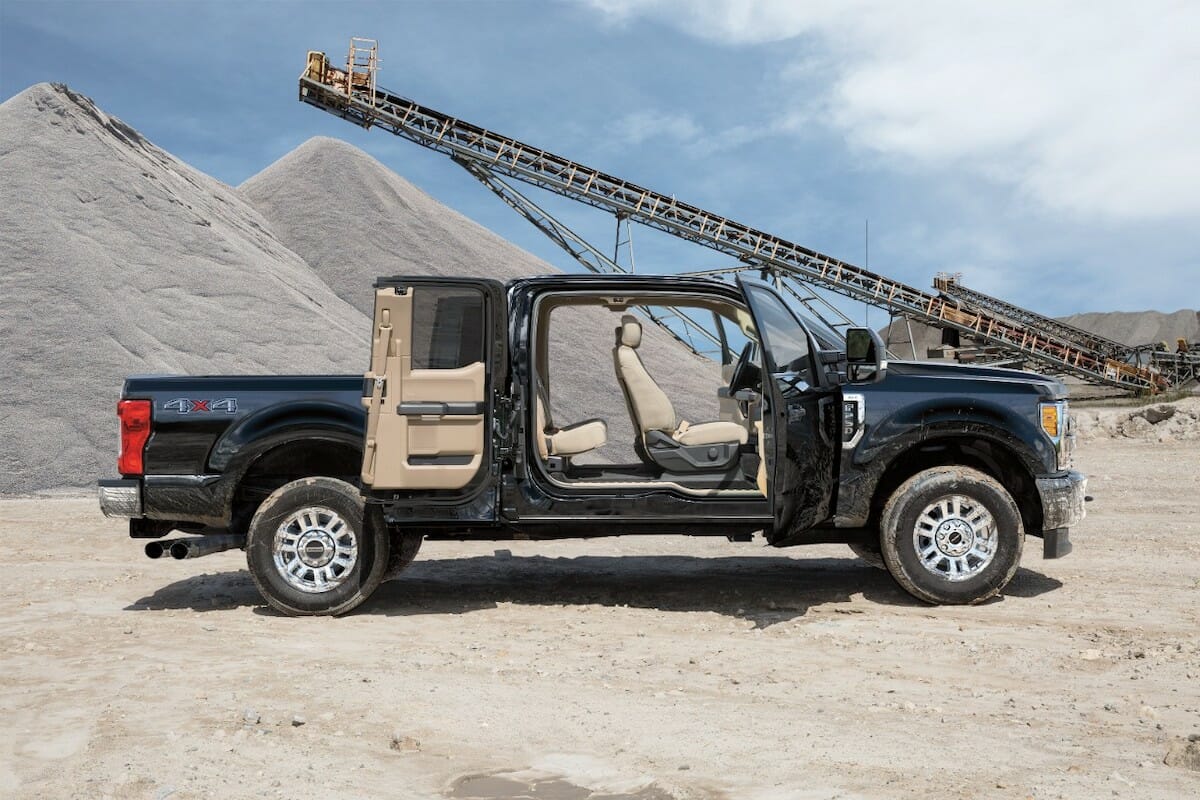
Which Ford F-250 Super Duty is Right for Me?
While there is an overwhelming amount of configurations for the F-250 Super Duty, there are a few stand-out examples that get you the most bang for your buck.
A 2009 Ford F-250 in FX4 or Lariat trim with the diesel engine gives you the most reliable, highest technology, and best towing capability of the used market for Super Duty trucks.
These trucks are generally $22,000-$25,000, depending on mileage, making for one of the best deals on a luxurious utilitarian truck.
If you are after a newer model, skip the third-generation as it is still affected by new-truck pricing, even for a 2015 model. We recommend going for a 2018 F-250 XLT or Lariat to benefit from chassis upgrades and more recent technology for the similar $45,000-$50,000 price range of third-generation F-250s.
Overall, there are plenty of configurations in which the F-250 has sold over the past 20 years. If you are looking for specific options, it is most likely out there in the used market.
Photos: Ford; Wiki Commons: IFCAR